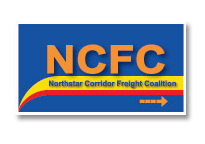CCFC Message Delivered To Transportation Infrastructure Forum
Fri, 10/15/2004"Building the New Wisconsin Economy" is a two-year civic journalism project designed to engage the public and stimulate a high-profile, ongoing discussion about the importance of economic development in Wisconsin. BNWE held its forum on “Infrastructure” (energy, transportation, and telecommunications) on 8/17/04 at Waukesha. Counsel participated as a panelist in the segment entitled “The Status of Wisconsin's Transportation Infrastructure and Its Implications for Wisconsin's Future.” Hon. Frank Busalacchi, Secretary of WisDOT, presented the opening remarks for the segment. Other private sector panelists included: Bob Cook, Executive Director, Wisconsin Transportation Development Association; and Jim Reichart, Midwest Airlines, Inc. Public sector panelists for the segment included: John Antaramian, Mayor, City of Kenosha; Tom Barrett, Mayor, City of Milwaukee; Gary Becker, Mayor, City of Racine; Dan Finley, County Executive, Waukesha County; and Scott Walker, County Executive, Milwaukee County. The press panel included: Lisa Hildebrand, Business Editor, Green Bay Press Gazette; and Dennis Shook, Editorial Page Editor, Waukesha Freeman. The public sector panelists were very focused on “local regional” issues. All demonstrated their sensitivity, creative thinking, and fiscal discipline on tackling the problems of allocating limited transportation resources to meet growing needs. They did, however, definitely hear and acknowledge CCFC's message on private sector freight. CCFC's message emphasized the need for effective performance of the regional transportation system, and the key point, that many of the solutions for Wisconsin's transportation issues lie beyond Wisconsin's borders and can only be promoted effectively through cooperation and coordination across the Upper Midwest region. CCFC participation in the panel was based on the following outline, and essentially all of the key points were delivered through a combination of Counsel's initial presentation, discussion by the panelists, and the question and answer segment. Wisconsin Freight Shipper Perspective - For Wisconsin shippers, many of the current and growing problems for freight mobility and their solutions lie beyond the borders of Wisconsin. Shippers need:
- Availability of capacity. Rates that are not inflated by simply chasing after existing capacity, i.e., constrained by shortages of truck drivers, rail operating engineers, rail cars, and lack of fluidity or meltdown reflected in critical drops in train speed and increases in dwell times.
- Consistent rail service, not subject to congestion generated from forecasting errors and/or mere spurt in volume.
Just a small uptick in economy has brought huge capacity problems which, if permitted to persist, will ultimately constrain economic competitiveness and growth. The immediate problems are nothing compared to dealing with predicted long term growth in demand. Complexity and Systems Issues - Freight mobility issues affecting the Wisconsin economy are complex:
- They need to be addressed from local, state, and regional perspectives. Perspectives need to be focused on “systems” issues, that the various components of our policies and our investment in mobility infrastructure for both people and freight work as a whole, and that assets are designed to meet critical needs and to perform as predicted.
- E.g., Anytime rail or intermodal is considered as an alternative for freight, to improve highway performance, multi-state and regional cooperation and coordination will be critical.
We congratulated WisDOT for its leadership and support for Upper Midwest Freight Corridor Study. We Have a Conviction That - Future success in freight transportation and logistics in the state, region, and nation is mostly about two things:
- Increasingly tighter coordination of the components; and
- Doing more with less, continuing to shrink the % of GDP expended for transportation and logistics.
Economic Growth -
- From 1970 to 2000, growth in truck VMT and intercity truck ton-miles tracked precisely with growth in total employment and GDP.
- The 7-State Upper Midwest Region generates 30% of the nation's freight movements.
- Also, the region's key highway and rail corridors carry a heavy load, absolutely and compared to other regions, of through freight (freight neither originating or terminating within the region).
- What is good for mobility of freight is generally good for mobility of people, but not necessarily visa-versa.
Recommendations for Regional Cooperation -
- A coordinated petition by 7 states of the region requesting USDOT to designate key Upper Midwest freight corridors a “Corridor of National Significance”.
- Also, a coordinated offer by 7 states to FHWA's Freight Office to use the corridor as a “new initiatives corridor” or “test case studies corridor”.
Recommendation, Squeeze Additional Capacity from Existing Infrastructure -
- Promote pilot projects and exemptions from prescriptive safety regulations by moving to performance-based operating and safety regulations for freight, which enhance both productivity and overall safety.
What Wisconsin Needs to Do - Continue to be a leader in promoting transportation and logistics solutions through regional coordination brought about by voluntary cooperation among the public and private sectors in the region (7 Upper Midwest states and bordering provinces of Manitoba, Ontario, and Quebec).



